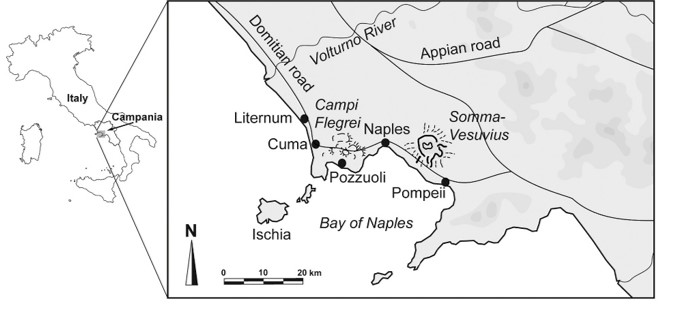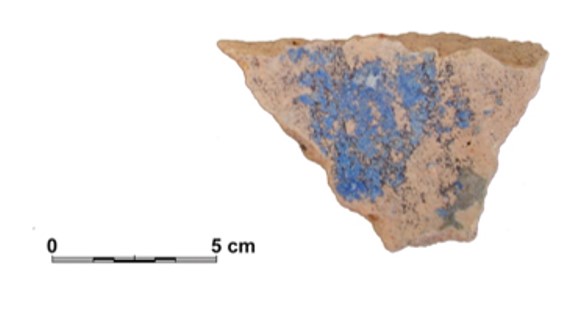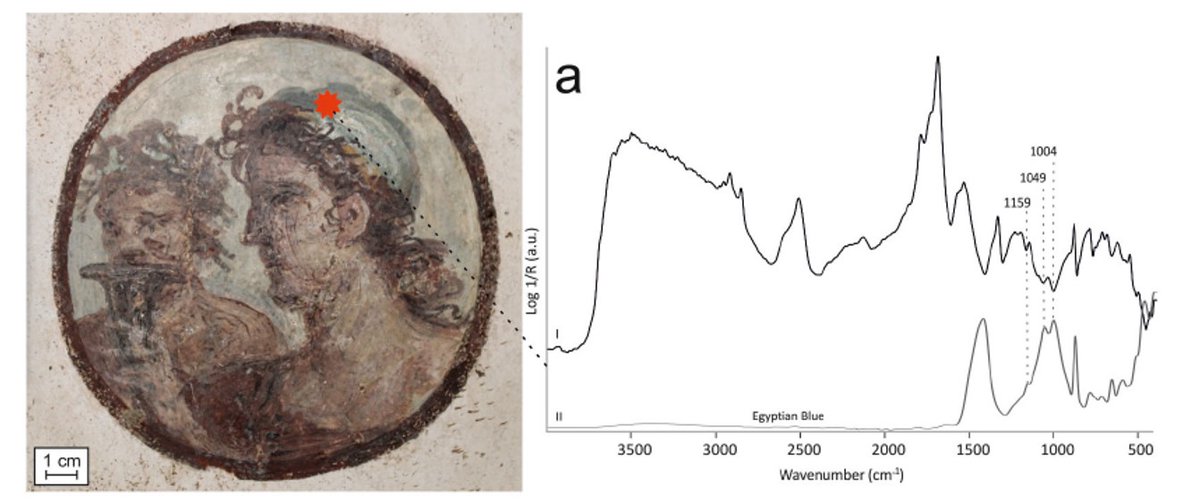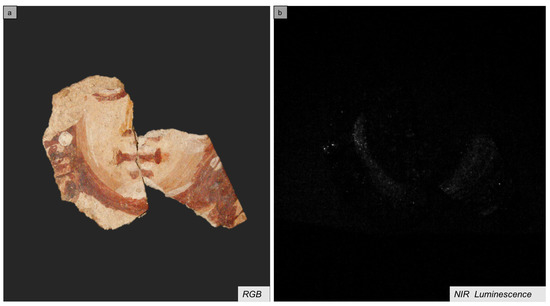Let’s talk about #EgyptianBlue, its manufacture and use from Egypt to the Iberian Peninsula, with a special insight into the Vesuvian area, where this pot containing original pigment has been excavated.
This bowl is conserved, among others containing several different pigments, at the Applied Research Laboratory of @pompeii_sites, and has been in-situ analysed via non-destructive portable techniques. https://twitter.com/cinnabarim/status/1261697161491886081">https://twitter.com/cinnabari...
“Blue was first manufactured at Alexandria…” This is what Vitruvius wrote on the origin of the first man-made pigment, present in this tiny scarab beetle. https://twitter.com/AMNH/status/1236295555254534146">https://twitter.com/AMNH/stat...
On the manufacture process in Ancient Egypt, let’s have a look at this fabulous #thread by @surimana16: https://twitter.com/surimana16/status/1242191219238801409">https://twitter.com/surimana1...
This pigment was used even by the Iberian culture, whose polychromed Damas date back to the 5th and 4th century BCE, before the Roman conquest of the Iberian Peninsula. https://twitter.com/MANArqueologico/status/1139444748131983360">https://twitter.com/MANArqueo...
Egyptian Blue was manufactured “afterwards by Vestorius at Puteoli”, as stated by Vitruvius. As we already mentioned in this #thread, Puteoli (current Pozzuoli) was also well-known for its “purpurissum”. https://twitter.com/cinnabarim/status/1268200236838727691">https://twitter.com/cinnabari...
To this aim, “sand is ground […] as fine as flour, to which coarse filings of Cyprian copper are added, to make a paste when moistened with water; this is rolled into balls with the hand, and dried. The balls are then put into an earthen vessel, and that is placed in a furnace.”
Several crucible fragments with blue frit residues have been found at Cuma, near Puteoli, pointing out to a local workshop, whose artisans were perfectly capable of regulating the temperature needed for the synthesis (950-1050 ºC), varying the fuel quantity and the firing time.
The analyses have revealed that the sand used was rich in quartz, feldspar and iron-titanium oxides, in good agreement with the Phlegraean Fields coastline. In addition, an alloy was employed as copper source, since cassiterite (SnO2) and malayaite (CaSnSiO5) have been detected.
The later could be the “Cyprian copper” mentioned by Vitruvius. Indeed, since the XIX Dynasty (Ramesses II), mineral copper sources (e.g. malachite, azurite or cuprite) were replaced by metallic alloys. https://twitter.com/RBINSmuseum/status/761476589406257152">https://twitter.com/RBINSmuse...
Hence, the #EgyptianBlue pigment used in mural paintings at @pompeii_sites could have a local origin. Let’s have a look at some examples, such as this exedra at the House of Ariadne (Regio VII, 4, 31/51), in which we performed in-situ analysis. https://twitter.com/cinnabarim/status/1261697175756705792">https://twitter.com/cinnabari...
Indeed, #EgyptianBlue was one of the expensive pigments that let the wealthiest families show off their sumptuous way of life, as in the fauces of the House of Marcus Lucretius (Regio IX, 3, 5). https://twitter.com/cinnabarim/status/1271822082586877952">https://twitter.com/cinnabari...
#EgyptianBlue has also been identified in this tondo of the House of Octavius Quartio (Regio II, 2, 2), thanks to the infrared bands acquired with portable instrumentation.
It is also noteworthy the use of a blue hue in mural paintings depicting orchards and illusionistic gardens, such as this example of the House of the Orchard (Regio I, 9, 5), shared by @pompei79. https://twitter.com/pompei79/status/974778169579491328">https://twitter.com/pompei79/...
There exist plenty of examples beyond the Vesuvian area, such as the wall paintings of the Tomb of the Diver at @paestumparco. https://twitter.com/cinnabarim/status/1258417148017496066">https://twitter.com/cinnabari...
This pigment was mixed with madder lake, in order to yield a violet hue, a substitute of Tyrian purple. This mixture has been detected in Pompeian pigment pots, as well as in Hellenistic oinochoe, shared by @JoanneDyer_BM.
https://www.sciencedirect.com/science/article/abs/pii/S0143720817316480">https://www.sciencedirect.com/science/a... https://twitter.com/cinnabarim/status/1268200234120773632">https://twitter.com/cinnabari...
https://www.sciencedirect.com/science/article/abs/pii/S0143720817316480">https://www.sciencedirect.com/science/a... https://twitter.com/cinnabarim/status/1268200234120773632">https://twitter.com/cinnabari...
In addition, it has been detected as a contamination of yellow and red ochre Pompeian pots. This may be due to a previous storage of #EgyptianBlue in the same pot or the manipulation of two different pigments using the same paintbrush or spatula. https://onlinelibrary.wiley.com/doi/full/10.1002/jrs.5414">https://onlinelibrary.wiley.com/doi/full/...
The application of #EgyptianBlue below the flesh tones has been identified in funerary mummy portraits, as shared by @joannedyer_BM, and in this example of the tomb of Costis Palamas, in which its presence was revealed via its near infrared luminescence.
https://twitter.com/JoanneDyer_BM/status/1246026628632903681">https://twitter.com/JoanneDye...
https://twitter.com/JoanneDyer_BM/status/1246026628632903681">https://twitter.com/JoanneDye...
Last but not least, the infrared luminescence that enables the identification of #EgyptianBlue in archaeological records has proved to be a useful tool for biomedical research and imaging as well. https://twitter.com/KassoTuuli/status/1245828176850362368">https://twitter.com/KassoTuul...
If you want to learn more about #EgyptianBlue, here you have some interesting reads:
https://ceramics.onlinelibrary.wiley.com/doi/full/10.1111/jace.14370
https://ceramics.onlinelibrary.wiley.com/doi/full/... href=" https://www.mdpi.com/2076-0752/8/2/74
https://www.mdpi.com/2076-0752... href=" https://link.springer.com/article/10.1140/epjp/i2018-12224-6">https://link.springer.com/article/1...
https://ceramics.onlinelibrary.wiley.com/doi/full/10.1111/jace.14370
Aquí te cuento este #hilo en castellano: https://twitter.com/cinnabarim/status/1276906029482033152">https://twitter.com/cinnabari...

 Read on Twitter
Read on Twitter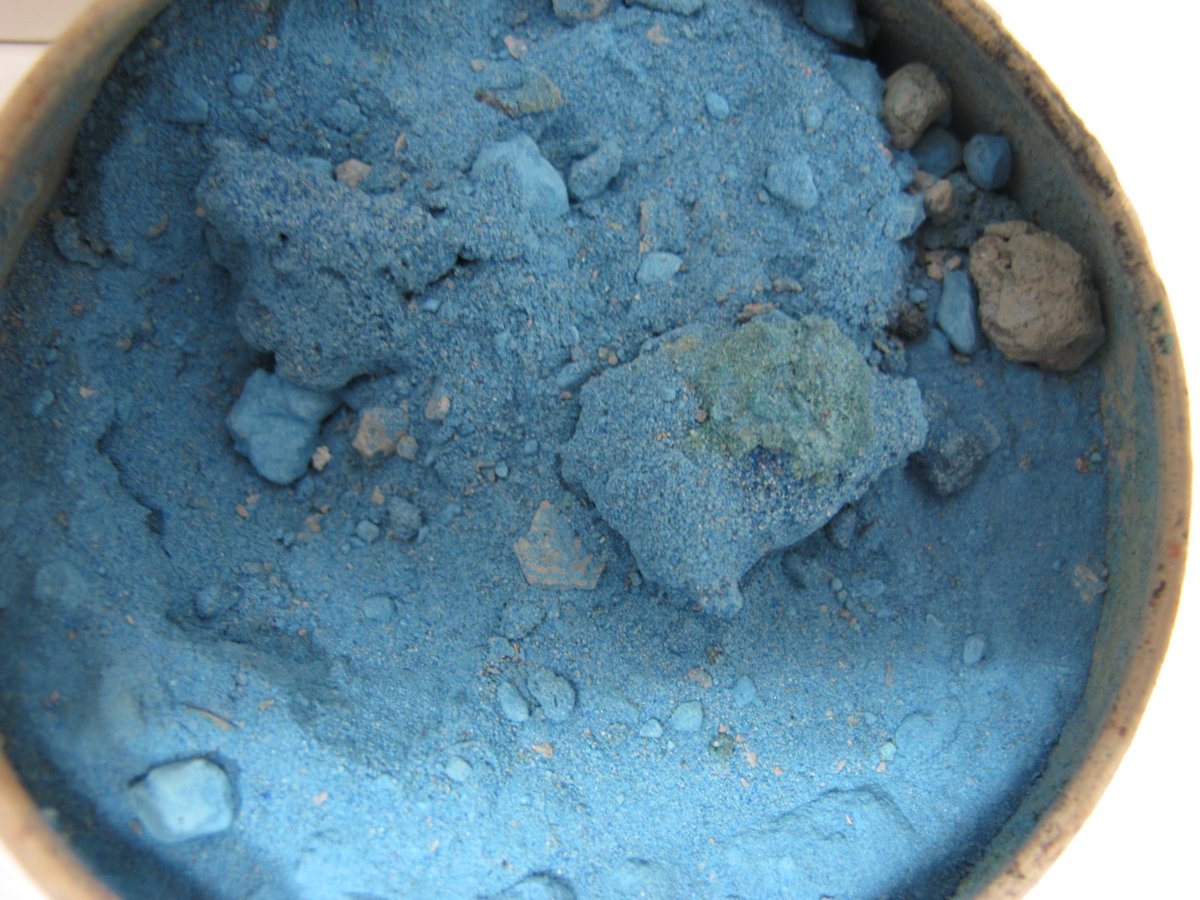
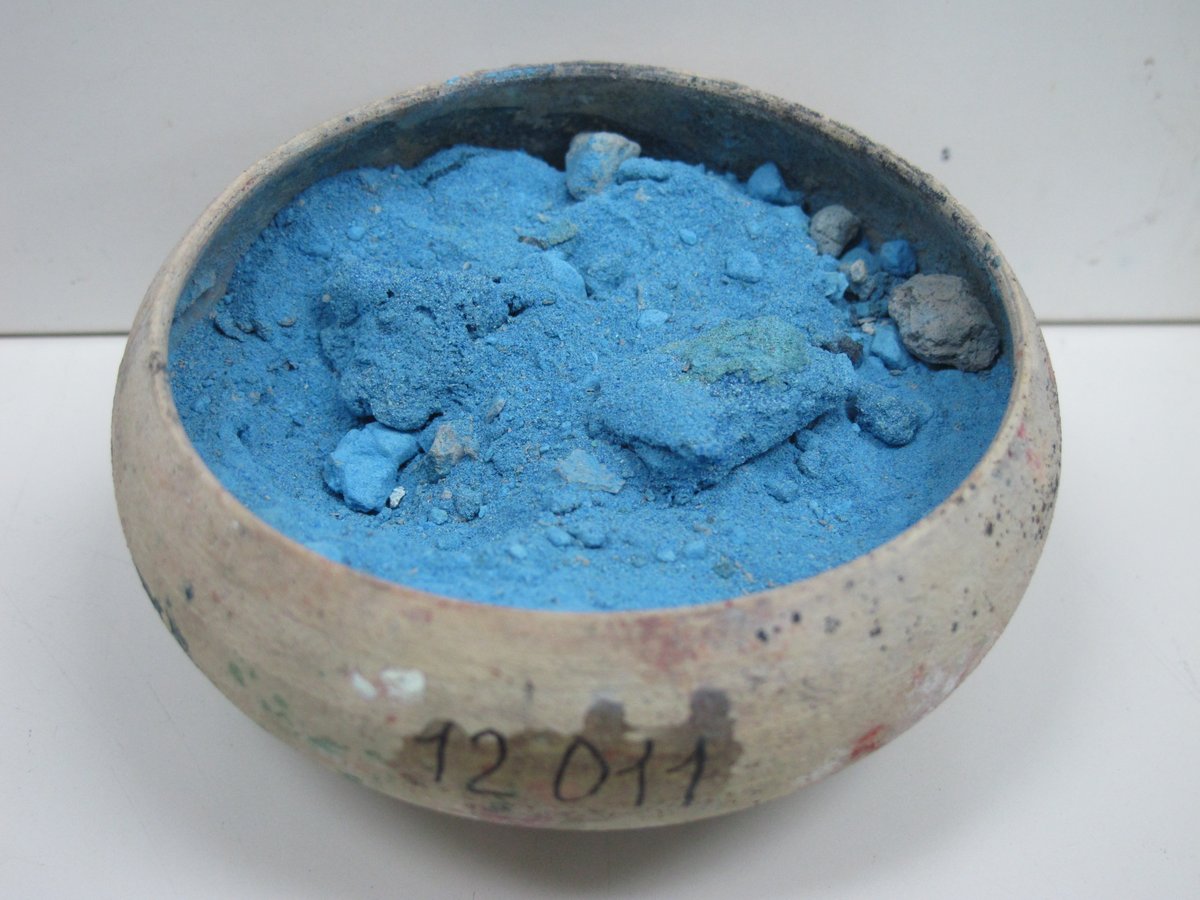
![To this aim, “sand is ground […] as fine as flour, to which coarse filings of Cyprian copper are added, to make a paste when moistened with water; this is rolled into balls with the hand, and dried. The balls are then put into an earthen vessel, and that is placed in a furnace.” To this aim, “sand is ground […] as fine as flour, to which coarse filings of Cyprian copper are added, to make a paste when moistened with water; this is rolled into balls with the hand, and dried. The balls are then put into an earthen vessel, and that is placed in a furnace.”](https://pbs.twimg.com/media/Ebh3JoGXYAAqISZ.jpg)
![To this aim, “sand is ground […] as fine as flour, to which coarse filings of Cyprian copper are added, to make a paste when moistened with water; this is rolled into balls with the hand, and dried. The balls are then put into an earthen vessel, and that is placed in a furnace.” To this aim, “sand is ground […] as fine as flour, to which coarse filings of Cyprian copper are added, to make a paste when moistened with water; this is rolled into balls with the hand, and dried. The balls are then put into an earthen vessel, and that is placed in a furnace.”](https://pbs.twimg.com/media/Ebh3FiJWoAIOSgm.jpg)
